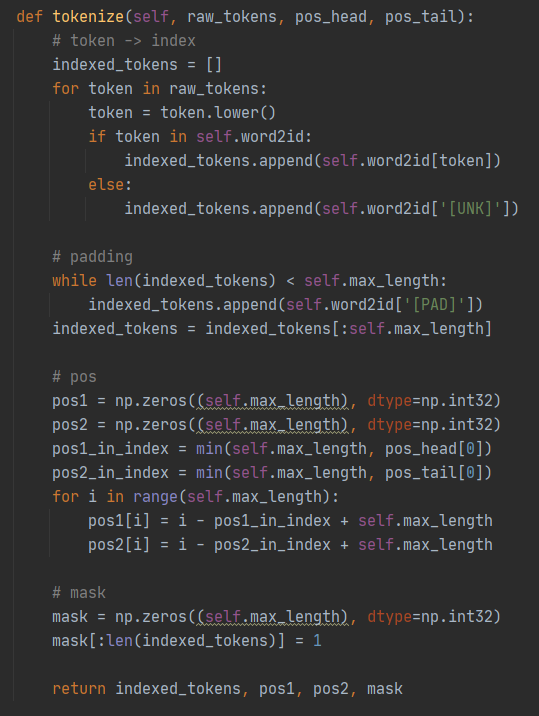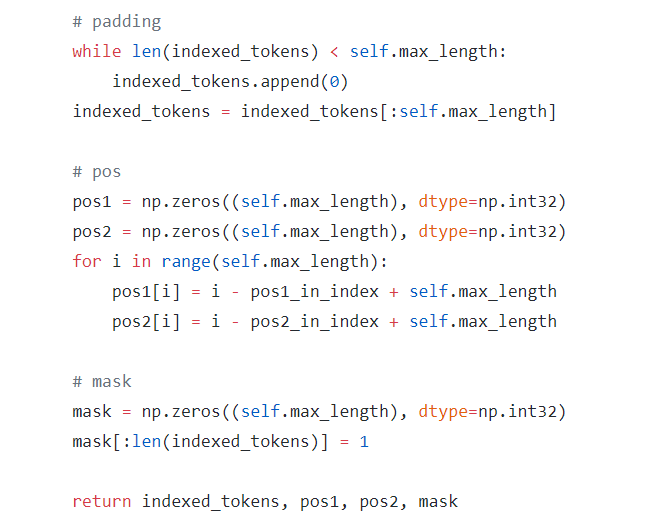Our benchmark website: https://thunlp.github.io/fewrel.html
FewRel is a large-scale few-shot relation extraction dataset, which contains more than one hundred relations and tens of thousands of annotated instances cross different domains. Our dataset is presented in our EMNLP 2018 paper FewRel: A Large-Scale Few-Shot Relation Classification Dataset with State-of-the-Art Evaluation and a following-up version is presented in our EMNLP 2019 paper FewRel 2.0: Towards More Challenging Few-Shot Relation Classification.
Based on our dataset and designed few-shot settings, we have two different benchmarks:
-
FewRel 1.0: This is the first one to incorporate few-shot learning with relation extraction, where your model need to handle both the few-shot challenge and extracting entity relations from plain text. This benchmark provides a training dataset with 64 relations and a validation set with 16 relations. Once you submit your code to our benchmark website, it will be evaluated on a hidden test set with 20 relations. Each relation has 100 human-annotated instances.
-
FewRel 2.0: We found out that there are two long-neglected aspects in previous few-shot research: (1) How well models can transfer across different domains. (2) Can few-shot models detect instances belonging to none of the given few-shot classes. To dig deeper in these two aspects, we propose the 2.0 version of our dataset, with newly-added domain adaptation (DA) and none-of-the-above (NOTA) detection challenges. Find our more in our paper and evaluation websites FewRel 2.0 domain adaptation / FewRel 2.0 none-of-the-above detection
If you used our data, toolkits or baseline models, please kindly cite our paper:
@inproceedings{han-etal-2018-fewrel,
title = "{F}ew{R}el: A Large-Scale Supervised Few-Shot Relation Classification Dataset with State-of-the-Art Evaluation",
author = "Han, Xu and Zhu, Hao and Yu, Pengfei and Wang, Ziyun and Yao, Yuan and Liu, Zhiyuan and Sun, Maosong",
booktitle = "Proceedings of the 2018 Conference on Empirical Methods in Natural Language Processing",
month = oct # "-" # nov,
year = "2018",
address = "Brussels, Belgium",
publisher = "Association for Computational Linguistics",
url = "https://www.aclweb.org/anthology/D18-1514",
doi = "10.18653/v1/D18-1514",
pages = "4803--4809"
}
@inproceedings{gao-etal-2019-fewrel,
title = "{F}ew{R}el 2.0: Towards More Challenging Few-Shot Relation Classification",
author = "Gao, Tianyu and Han, Xu and Zhu, Hao and Liu, Zhiyuan and Li, Peng and Sun, Maosong and Zhou, Jie",
booktitle = "Proceedings of the 2019 Conference on Empirical Methods in Natural Language Processing and the 9th International Joint Conference on Natural Language Processing (EMNLP-IJCNLP)",
month = nov,
year = "2019",
address = "Hong Kong, China",
publisher = "Association for Computational Linguistics",
url = "https://www.aclweb.org/anthology/D19-1649",
doi = "10.18653/v1/D19-1649",
pages = "6251--6256"
}
If you have questions about any part of the paper, submission, leaderboard, codes, data, please e-mail [email protected].
For FewRel 1.0, Hao Zhu first proposed this problem and proposed the way to build the dataset and the baseline system; Ziyuan Wang built and maintained the crowdsourcing website; Yuan Yao helped download the original data and conducted preprocess; Xu Han, Hao Zhu, Pengfei Yu and Ziyun Wang implemented baselines and wrote the paper together; Zhiyuan Liu provided thoughtful advice and funds through the whole project. The order of the first four authors are determined by dice rolling.
The dataset has already be contained in the github repo. However, due to the large size, glove files (pre-trained word embeddings) and BERT pretrain checkpoint are not included. Please use the script download_pretrain.sh to download these pretrain files.
We also provide pid2name.json to show the Wikidata PID, name and description for each relation.
Note: We did not release the test dataset for both FewRel 1.0 and 2.0 for fair comparison. We recommend you to evaluate your models on the validation set first, and then submit it to our evaluation websites (which you can find above).
To run our baseline models, use command
python train_demo.pyThis will start the training and evaluating process of Prototypical Networks in a 5-way 5-shot setting. You can also use different args to start different process. Some of them are here:
train / val / test: Specify the training / validation / test set. For example, if you usetrain_wikifortrain, the program will loaddata/train_wiki.jsonfor training. You should always usetrain_wikifor training andval_wiki(FewRel 1.0 and FewRel 2.0 NOTA challenge) orval_pubmed(FewRel 2.0 DA challenge) for validation.trainN: N in N-way K-shot.trainNis the specific N in training process.N: N in N-way K-shot.K: K in N-way K-shot.Q: Sample Q query instances for each relation.model: Which model to use. The default one isproto, standing for Prototypical Networks. Note that if you use the PAIR model from our paper FewRel 2.0, you should also use--encoder bert --pair.encoder: Which encoder to use. You can choosecnnorbert.na_rate: NA rate for FewRel 2.0 none-of-the-above (NOTA) detection. Note that herena_ratespecifies the rate between Q for NOTA and Q for positive. For example,na_rate=0means the normal setting,na_rate=1,2,5corresponds to NA rate = 15%, 30% and 50% in 5-way settings.
There are also many args for training (like batch_size and lr) and you can find more details in our codes.
You can evaluate an existing checkpoint by
python train_demo.py --only_test --load_ckpt {CHECKPOINT_PATH} {OTHER_ARGS}Here we provide a BERT-PAIR checkpoint (trained on FewRel 1.0 dataset, 5 way 1 shot).
BERT-PAIR for FewRel 1.0
python train_demo.py \
--trainN 5 --N 5 --K 1 --Q 1 \
--model pair --encoder bert --pair --hidden_size 768 --val_step 1000 \
--batch_size 4 --fp16 \Note that --fp16 requires Nvidia's apex.
| 5 way 1 shot | 5 way 5 shot | 10 way 1 shot | 10 way 5 shot | |
|---|---|---|---|---|
| Val | 85.66 | 89.48 | 76.84 | 81.76 |
| Test | 88.32 | 93.22 | 80.63 | 87.02 |
BERT-PAIR for Domain Adaptation (FewRel 2.0)
python train_demo.py \
--trainN 5 --N 5 --K 1 --Q 1 \
--model pair --encoder bert --pair --hidden_size 768 --val_step 1000 \
--batch_size 4 --fp16 --val val_pubmed --test val_pubmed \| 5 way 1 shot | 5 way 5 shot | 10 way 1 shot | 10 way 5 shot | |
|---|---|---|---|---|
| Val | 70.70 | 80.59 | 59.52 | 70.30 |
| Test | 67.41 | 78.57 | 54.89 | 66.85 |
BERT-PAIR for None-of-the-Above (FewRel 2.0)
python train_demo.py \
--trainN 5 --N 5 --K 1 --Q 1 \
--model pair --encoder bert --pair --hidden_size 768 --val_step 1000 \
--batch_size 4 --fp16 --na_rate 5 \| 5 way 1 shot (0% NOTA) | 5 way 1 shot (50% NOTA) | 5 way 5 shot (0% NOTA) | 5 way 5 shot (50% NOTA) | |
|---|---|---|---|---|
| Val | 74.56 | 73.09 | 75.01 | 75.38 |
| Test | 76.73 | 80.31 | 83.32 | 84.64 |
Proto-CNN + Adversarial Training for Domain Adaptation (FewRel 2.0)
python train_demo.py \
--val val_pubmed --adv pubmed_unsupervised --trainN 10 --N {} --K {} \
--model proto --encoder cnn --val_step 1000 \| 5 way 1 shot | 5 way 5 shot | 10 way 1 shot | 10 way 5 shot | |
|---|---|---|---|---|
| Val | 48.73 | 64.38 | 34.82 | 50.39 |
| Test | 42.21 | 58.71 | 28.91 | 44.35 |




